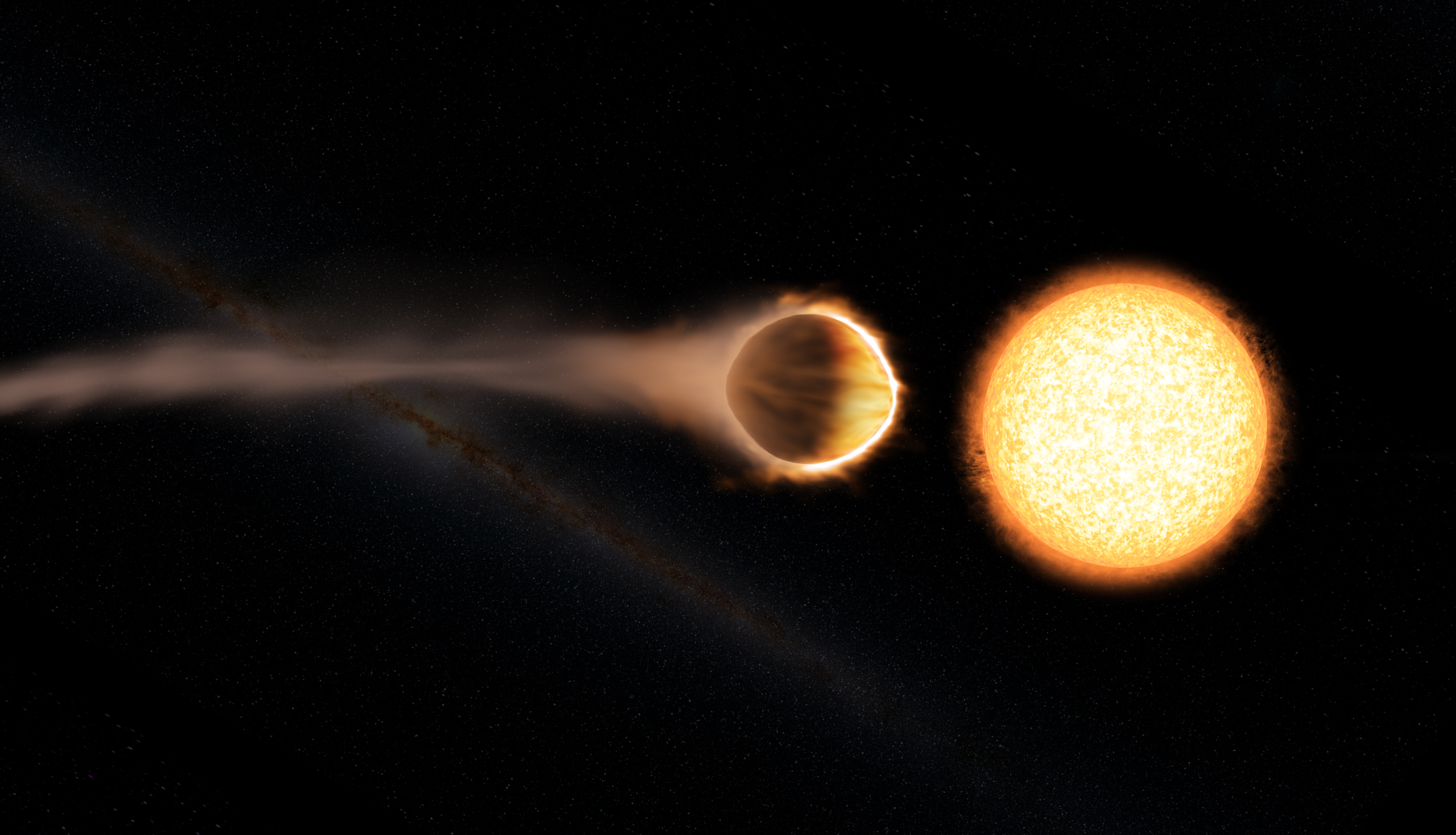
An international team of researchers using the NASA/ESA Hubble Space Telescope and several other observatories have, for the first time, uncovered a galaxy that is missing dark matter.

The Hubble Telescope has taken some breathtaking images along the way. That includes the Eagle Nebula, also called the Pillars of Creation or M16. Now, Hubble’s added another twelve new images.

Lengthy observations by the Hubble Space Telescope indicate the universe is expanding faster than predicted by standard models and that Einstein’s cosmological constant, thought by many to define dark energy, may not be so constant after all.

The Hubble Space Telescope shows a “sparkling jewel box full of stars,” NASA says, in the central bulge of the Milky Way, with more plentiful bright blue stars in the foreground.

An international team of astronomers has discovered one of the most extreme instances of magnification by gravitational lensing.

Galaxy cluster ACT-CLJ0102-4915, or “El Gordo” contains the mass of a staggering three million billion suns. It is the largest, hottest, and brightest X-ray galaxy cluster ever discovered in the distant Universe.
The Hubble Space Telescope was used to capture imagery of NGC 5256 (also known as Markarian 266). The interacting galaxies are 350 million light-years from Earth, in the constellation of Ursa Major.

The Very Large Telescope in Chile has taken the deepest spectroscopic survey of space ever, with astronomers focusing on the Hubble Ultra Deep Field.

The results suggest that the outer planets of the system might still harbour substantial amounts of water. This includes the three planets within the habitable zone of the star.

Scientists have discovered the strongest evidence to date for a stratosphere on a planet outside our solar system.

Analyzing a galaxy through a gravitational lens, astronomers obtained images 10 times sharper than Hubble could see on its own.

The next generations will be fed a steady diet of images and discoveries stemming from the Super Telescopes. And the LUVOIR will be front and centre among those ‘scopes.

The aging space observatory, which launched into low Earth orbit on April 24, 1990, kicked off this year's birthday celebration with some dazzling new views of a pair of spiral galaxies.

By using a space-time quirk first predicted by Einstein, the Hubble Space Telescope has also made it clear that our theories to explain the evolving universe are far from complete.

A stunning new image captured by the Hubble Space Telescope shows a galaxy that's being strangled by tentacles of gas and dust. The strange and intricate shape of this celestial object is caused by a supermassive black hole.